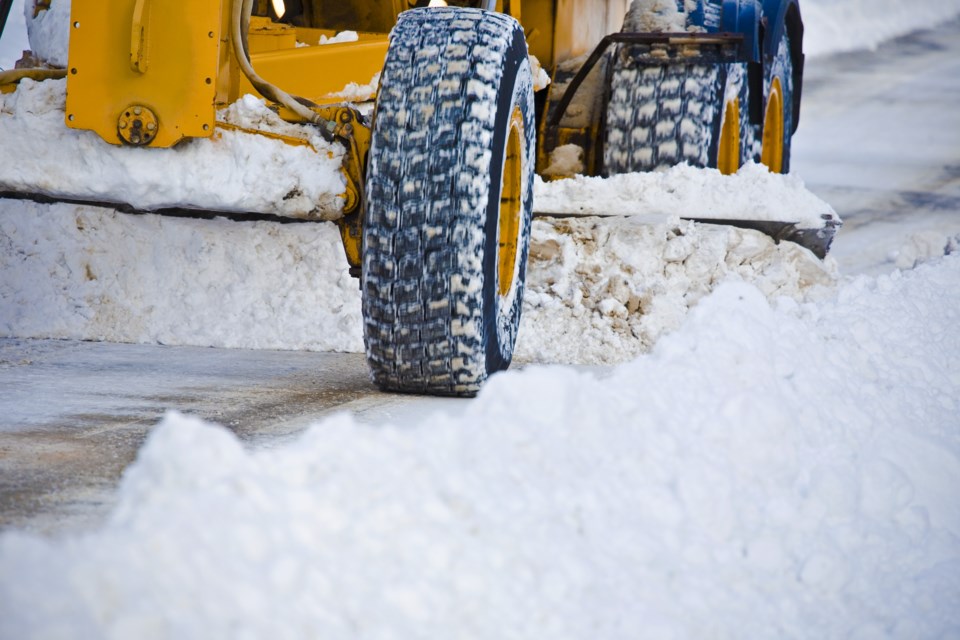A regular feature of winter snow plowing are issues clearing snow from cul-de-sacs. It’s something Ward 11 Coun. Bill Leduc has heard about from residents in his ward,
“We get a lot of calls from residents on cul-de-sacs and people on the corners,” Leduc told members of the operations committee Monday. “Is there any chance we're looking at how we're doing it right now to try and reduce the calls that we get?”
Infrastructure GM Tony Cecutti said the city receives a lot of calls from people about the way cul-de-sacs are cleared. Cecutti said two factors play into the complaints: the way they are designed means normal snowplowing equipment can clear them properly.
“Many of our cul-de-sacs were designed and constructed to a standard that makes it such that we need to use different types of vehicles to get in there,” he said.
“So we're often making one pass to open up the roadway, then sending another vehicle in to clean up after the fact. So often, people will call because they're wondering when we're going to be back to do the cleanup.”
The second factor is cul-de-sacs are located on residential roads, which, during snow storms, are cleared after main, much busier roads are dealt with.
“They're fairly low priority roadways,” Cecutti said. “So we tend not to get phone calls about the finished quality of the product, but it's usually more around the timing. And as you can appreciate, they necessarily are among the lower priority roadways.
“So it is a question of patience. We do get around there eventually and it gets the most cost-effective method for the whole map.”
Leduc also wondered whether plow drivers approaching an intersection could find a way to deposit less snow at houses located at right-hand turns.
“They’re dragging all that snow around the corner,” Leduc said, leaving a disproportionate amount of snow in front of those homes.
Cecutti said plows are picking up a lot of snow as they make those right-handed turns.
“So as soon as they make the right-hand turn, they’re depositing a lot of snow that's on the snowplow blade on the snowbank. So certainly the first couple hundred feet as you leave an intersection on the right, the banks tend to get a little bit higher and wider as we progress through the winter.”
While there’s no practical way to avoid it and still clear roads as quickly and efficiently as possible, Cecutti said if the banks at the intersections get too high, it can block the view of someone trying to turn.
“If that volume of snow impedes somebody's ability to look to the left as they're turning right, then we'll clean that up as the winter progresses,” he said. “(But) there's not a lot you can do to change the practice. You have to clean the intersection, so that the snowbank on the right side when you turn right is naturally always going to be a little bit bigger than the rest of the roadways throughout our network.”
“We do snow removal those intersections to ensure that we provide adequate sight lines,” added Randy Halverson, the city’s manager of operations. “Those are areas that we typically get back to at least once, sometimes a couple of times during the year to ensure that they have adequate sideline distances.”
Renee Higgins, the city’s manager of 311 and customer service, said they received about 700 calls Nov. 27, the day of the storm, rising to 1,200 calls the next day.
“(One) thing that those numbers don't show is that calls related to the winter storm typically have a long waiting time, because we do a lot of education,” Higgins said. “(Operators) explain to residents what the service level is in regards to winter maintenance.”
Operators spent an average of more than five minutes with callers, and when combined with a surge in calls, wait times for a response ran as long as 10 minutes.
“It's (when people are) driving to work or on the drive home from work that will trigger some calls,” she said. “We're seeing a lot of value in the 311 extended operating hours right now, as well.
“We always tell them if the plow hasn't come to you within 24 hours of the end of the storm, call us back and then we'll log the issue for you. So we are quite busy because we don't we don't hang up quickly with citizens. We want to make sure they understand the service level very well by the end of the call. Our goal is to use that opportunity to try to educate citizens as much as possible.”
